exoplanet
Latest
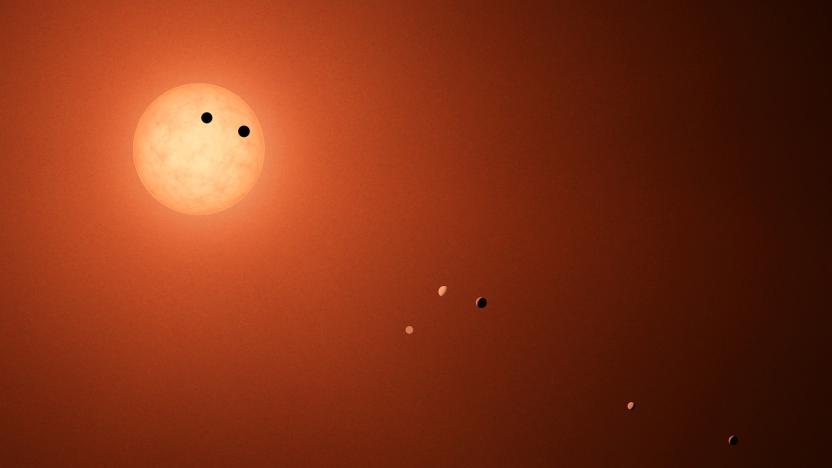
Trappist-1 planets may have formed from chunks of melting ice
After its discovery, Trappist-1 instantly became one of the most interesting stars in the Milky Way, with seven Earth-sized planets including three in the life-supporting "habitable zone." But, why did the planets form in such uniform Earth-like sizes so close to their star? Astronomers from the University of Amsterdam believe everything can be explained by small chunks of ice that clustered in the region where water just starts to freeze. Eventually, enough chunks clotted together like plasticine, forming worlds just inside the "ice zone" -- the perfect spot for life.

Most habitable planets may be completely covered in water
When you imagine what a rocky, habitable planet looks like, it's easy to picture an alternate Earth where land and oceans exist in an ideal balance. Unfortunately, that's not necessarily how it will pan out in real life... in fact, you might be surprised if there's land at all. University of Barcelona researcher Fergus Simpson has published a study suggesting that most planets with any significant amount of water are likely to be completely (or almost completely) submerged in it. He ran computer simulations accounting for numerous factors in a planet (such as the deep water cycle and erosion), and most with substantial water levels had an above-water land mass of less than 10 percent -- well below Earth's 29 percent.
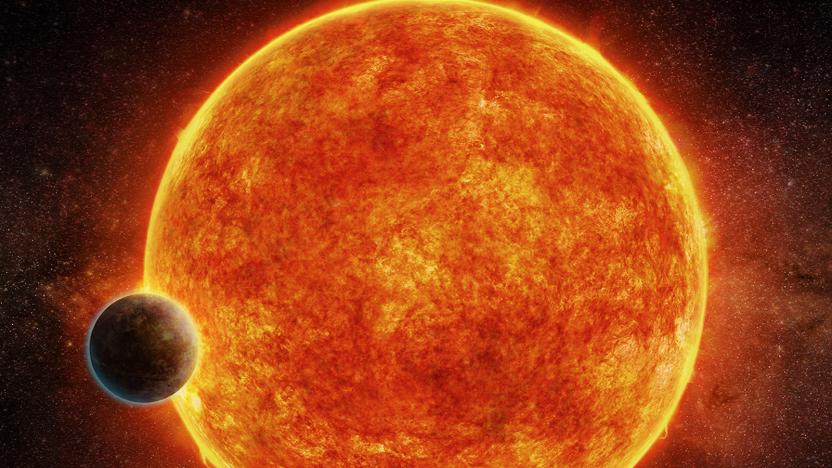
Nearby 'super-Earth' may be our best shot yet at finding alien life
Scientists are finding potentially life-bearing planets at a surprisingly high rate, but the latest may be more tantalizing than most. A research team has discovered LHS 1140b, a temperate rocky exoplanet orbiting the habitable zone of a tiny star 40 light years away. While it's not the first such planet found relatively nearby, it's an ideal candidate for study -- since it transits in front of its host, astronomers could look for water and oxygen in the planet's atmosphere by watching how it filters starlight. The star itself also doesn't emit much high-energy radiation, so there's a greater chance of life than you might see around stars like TRAPPIST-1.

NASA offers first look at planet-rich Trappist-1 star system
NASA was quick to offer conceptual images of Trappist-1 and its abundance of Earth-sized planets. But what does the star system look like, really? At last, now we know... sort of. As part of a raw data release, NASA has offered a simple, 11-by-11 pixel animation that shows the dwarf star as it was on February 22nd. Technically, you're looking at a target pixel file that represents the light levels the Kepler space telescope caught while studying Trappist-1 for an hour. You won't see planets, unfortunately -- an Earth-like planet would barely make a blip in the brightness levels, even if it crossed directly in front of the star.

Visit NASA's newly discovered planets in 'Elite: Dangerous'
Sadly, it's unlikely that you'll ever visit the Trappist-1 system's newly-discovered Earth-sized planets in your lifetime... not unless someone develops near-light speed travel, anyway. However, you'll at least have the option of a virtual tour. Frontier Developments is promising Ars Technica that the second Elite: Dangerous version 2.3 beta will let you visit Trappist-1 and its seven worlds. The developers are really just modifying an existing system in a similar location (Core Sys Sector XU-P a5-0), but that still means that you'll get a rough sense of what it would be like. You'll get to land on at least some of them, two of which will be Earth-like.

NASA: We found 7 Earth-sized planets just 40 light years away
During a news conference in Washington DC Wednesday, NASA revealed that, using the Spitzer Space Telescope, they've found seven new Earth-sized planets orbiting a star just 40 light years away from us. What's more, three of those exist within the "Goldilocks zone" which could be habitable for life.

NASA to announce a 'discovery beyond our solar system' tomorrow
Exoplanets, those that orbit stars beyond our own Sun are the most likely places that we'll discover extraterrestrial life. On Wednesday, February 22nd, NASA is planning to announce a "discovery beyond our solar system" at a press conference in Washington DC.
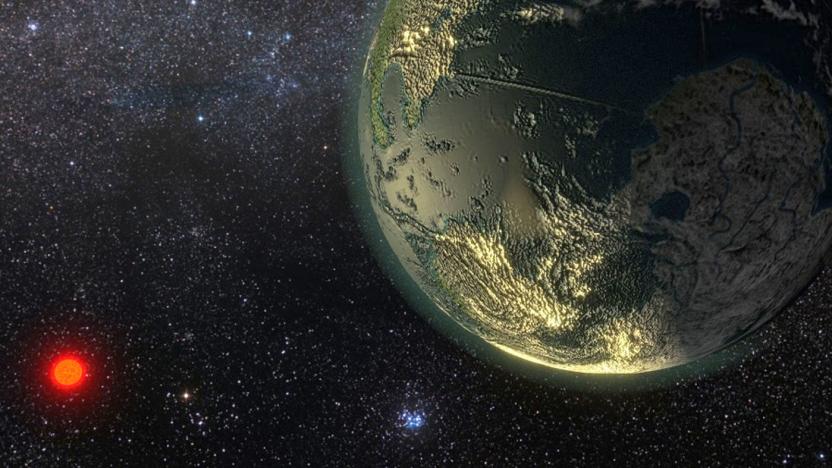
Scientists release huge set of exoplanet-detecting observations
If you've always wanted to find exoplanets, now's your chance to help. A team of scientists from MIT, Carnegie Mellon and other universities have released a huge dataset containing 61,000 individual measurements of more than 1,600 nearby stars. All the measurements came from two decades of observations made by the HiRES spectrometer, which is mounted on a 33-foot telescope at the Keck Observatory in Hawaii, using a technique called radial velocity method. Simply put, the scientists used the tool to detect the tiny wobble stars make in response to the gravity of an orbiting planet. Thus, the dataset contains the date, the star's velocity, the error on that velocity and measurements of its activity during that observation.

With new method, scientists find water on an exoplanet
Finding planets is hard, finding water on planets is harder, and finding water on exoplanets is pretty damn hard. And yet, a group of scientists claim to have achieved just that with the help of the Very Large Telescope in Chile. They believe that 51 Pegasi B, (also known as Dimidum), an exoplanet more than 50 light years away, has traces of water in its atmosphere.

ESO will upgrade its Very Large Telescope to hunt for exoplanets
The European Southern Observatory's Very Large Telescope is getting an upgrade. ESO signed an agreement with Breakthrough Initiatives, a program created to search for extraterrestrial intelligence, to modify its infrared instrument called VISIR (VLT Imager and Spectrometer for mid-Infrared). Once it's done, the observatory in the Atacama Desert of northern Chile will easily be able to spot exoplanets in the Alpha Centauri. According to ESO, the astronomers' discovery of a habitable planet in our neighboring star system late last year "adds even further impetus to this search."
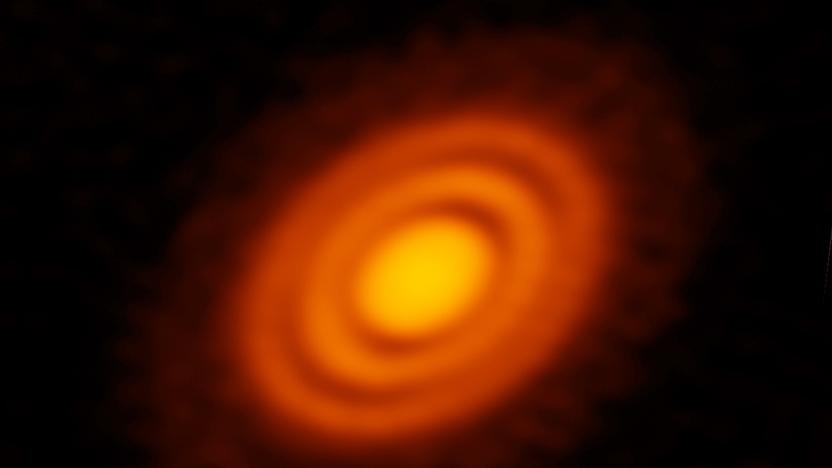
Exoplanets may have carved dusty tracks around a young star
Astronomers have spotted what they believe are two Saturn-sized planets carving "tracks" through a young star's protoplanetary disk. Although scientists have found plenty of exoplanets ranging from gas giants like Jupiter to rocky, Earth-like worlds, most orbit mature stars. However, the not-yet-fully-formed worlds imaged by the ALMA telescope array show that stars can possibly spawn planets at an earlier age than previously thought.
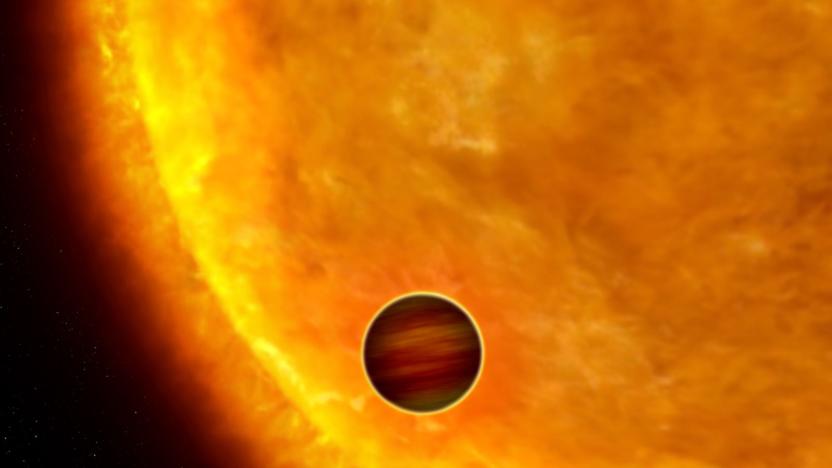
Scientists can directly observe alien planets with a new tool
Astronomers usually have to study exoplanets through roundabout ways, such as watching for the decrease in light when a planet crosses in front of a star. However, they'll soon have a reliable way to observe those alien worlds directly. A Princeton-led research team has successfully tested CHARIS, a supercooled spectrograph instrument that isolates reflected light from large planets (bigger than Jupiter) to reveal their age, mass and temperature. The key is its use of a coronagraph that separates planetary light from the host star's rays -- effectively, it's making sure the needle stands out from the haystack.

Scientists want to send a telescope to photograph Alpha Centauri
It used to be that if NASA didn't want to do something, it didn't get done, but we're a long way from those days. The agency doesn't believe that there's currently enough value in sending a probe to seek out new life forms and new civilizations in Alpha Centauri. But a consortium of private science nonprofits disagree, and are looking to send their own space telescope to snap our nearest neighbor. They've united together under the name Project Blue and hope to raise enough money to circumvent NASA and do it off their own backs.

There's a potentially habitable planet just one star over
Locating potentially habitable planets outside of our own solar system is pretty difficult -- and when we do find them, they're usually unfathomably far away. Today, one isn't. Astronomers have discovered a new exoplanet in the habitable zone of Earth's nearest neighboring solar system. For now, it's called Proxima b, and it's just over four light years away.

Close-by exoplanet may have an oxygen-rich atmosphere
At last, scientists might have spotted a rocky exoplanet with an oxygen-heavy atmosphwere... only it's not the alternate Earth you might be hoping for. Astronomers have determined that GJ 1132b (aka Gliese 1132b), a relatively close 39 light years away, stands a real chance of having oxygen-rich skies. However, it's also scorching hot at 450F (232C). With that kind of heat, any water vapor would have a greenhouse effect -- the atmosphere would cook the surface (turning it into a magma ocean) and eliminate any hope of life.
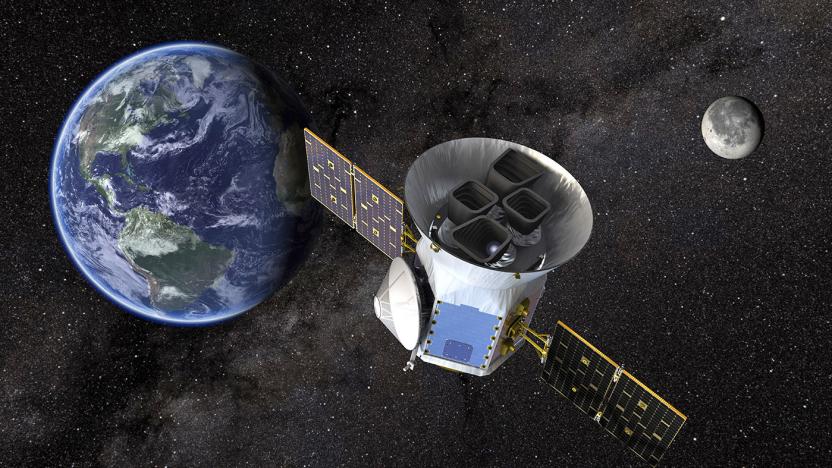
NASA's new satellite will look for Earth-sized planets nearby
The Kepler mission scopes out stars and galaxies thousands of light-years away to find exoplanets. NASA's upcoming planet hunter, however, will keep an eye on solar systems closer to home. The Transiting Exoplanet Survey Satellite or TESS will find planets by observing stars and looking out for shadows cast by transiting planets. It will be programmed to compute for a planet's size and the time it takes to orbit its star, because those are the information astronomers need to determine if it's habitable. Since Earth- and even super-Earth-sized planets are tiny, though, TESS will observe small bright dwarf stars only hundreds of light-years away.

Kepler space telescope spots two planets that might support life
After recovering from a shutdown scare back in April, NASA's Kepler telescope continues its mission scoping out the stars for Earth-size planets orbiting other stars, crude criteria to find ones that might support life. The spacecraft just spotted four more exoplanets in a cluster around a foreign sun, two of which fit the bill to potentially contain living organisms.

Researchers discover new exoplanet orbiting triple suns
In the constellation Centaurus, some 340 light-years from Earth, a newly discovered Jovian exoplanet has just been spotted in what Space.com is calling "a highly exotic celestial arrangement." The planet HD 131399Ab orbits three stars in a dizzying cosmic dance, and for about half of its 550-year trip around the star system, all three would appear visible in the planet's sky.

Newborn exoplanet might be the youngest ever observed
NASA's planet-hunting Kepler space telescope has made another interesting cosmic discovery, the space agency reports this week. The youngest, fully formed exoplanet ever observed has been spotted just 500 light-years from Earth in the K2–33 star system. The star is a mere 5 million to 10 million years old, meaning the planet, lovingly dubbed K2–33b, is about the same age and practically a baby on the cosmic scale.

Scientists find the largest known planet to orbit two stars
The notion of planets in a Tatooine-like system with two or more stars isn't strange (they've been known since 1993), but a truly massive planet hasn't been seen before... until now. Scientists using NASA's Kepler space telescope have discovered Kepler-1647b, the largest known planet to orbit two stars (aka a circumbinary planet). The 4.4 billion year old gas giant is about as large as Jupiter, and orbits at a much further distance than other confirmed planets with a 1,107-day trip. That's still much closer than Jupiter, which takes 12 years, but it remains a rarity given our current knowledge.






